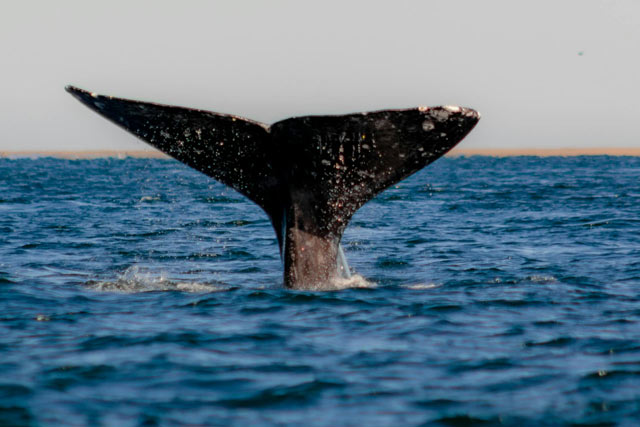If you’re planning a whale-watching trip in Montauk, you’re in for an unforgettable experience. But did you know, there’s more to whale watching than just spotting them? Knowing how to Identify whale species in Montauk adds a whole new level of excitement and appreciation to your adventure.
With Montauk being home to various types of whales, you’ll have plenty of opportunities to spot and identify these magnificent creatures. This guide will help you distinguish between the main six species seen in the waters of Montauk, so you’ll know whether you’re looking at a humpback, a fin whale, or even a minke whale.
Understanding the Basics of Whale Identification
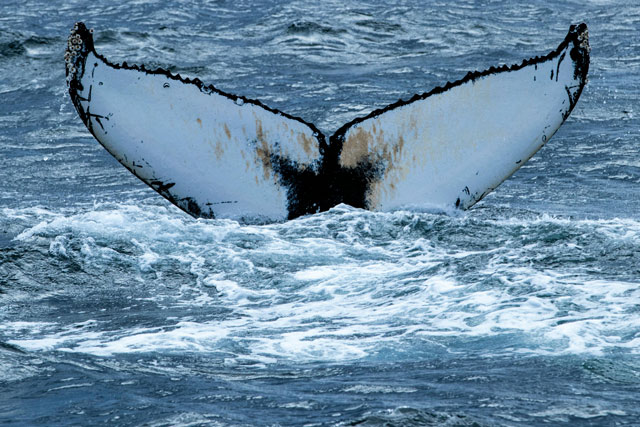
Identifying whales isn’t as tricky as it sounds, especially once you know what to look for. Here are the main features to focus on:
- Size: Whales in Montauk range in size from the relatively small minke whale (up to 33 feet) to the gigantic fin whale (up to 80 feet).
- Blow: Each species has a unique blow pattern. Humpbacks have a bushy blow, while fin whales produce a tall, column-like spout.
- Dorsal Fin Shape: Pay attention to the shape, size, and location of the dorsal fin.
- Flukes and Tails: Humpback whales, for example, have distinctive tail flukes with unique patterns.
- Behavior: Some species are more likely to breach, while others prefer staying closer to the surface.
Tips for Spotting and Identifying Whales
- Bring the Right Gear
A good pair of binoculars can make a world of difference when identifying whale species. Spotting scopes are another excellent tool for serious whale watchers. - Know the Migration Patterns
Whales are most abundant in Montauk from June through October. During this time, you’ll have the best chance of seeing multiple species in a single outing. - Learn Whale Behavior Patterns
Each whale species exhibits unique behaviors that can help you identify them. For example, humpbacks are famous for breaching and slapping their fins, while fin whales are more likely to glide swiftly through the water without dramatic movements. Observing how a whale moves and interacts with its environment can provide valuable clues. - Watch the Birds
Seabirds like gulls and terns often flock around feeding whales, especially during bubble-net feeding or other surface activities. If you notice a cluster of birds diving and circling, it’s a good indication that whales might be nearby.
Common Whale Species in Montauk
Montauk’s location along the Atlantic migratory route makes it a hotspot for several whale species. Here’s a breakdown of the most common ones:
Humpback Whales
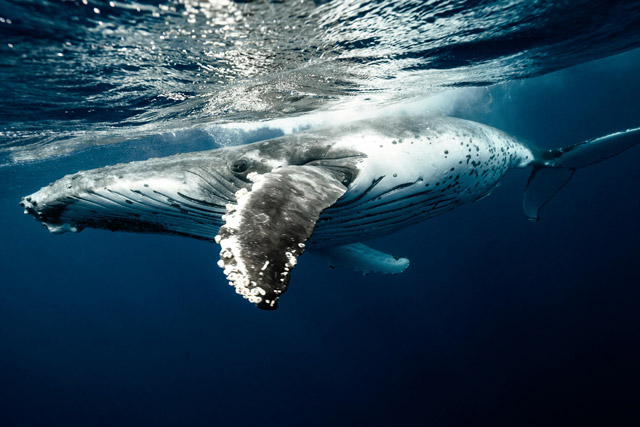
Humpbacks are the stars of Montauk’s waters. Known for their acrobatic breaches and long pectoral fins, they’re relatively easy to spot and identify. Look for:
- A bushy blow about 10 feet high.
- Black and white patterns on their flukes.
- Long, white pectoral fins, often visible when they swim close to the surface.
- Pro Tip: If you see a whale breaching (jumping out of the water), it’s most likely a humpback. They’re the most playful species in Montauk’s waters.
Fin Whales
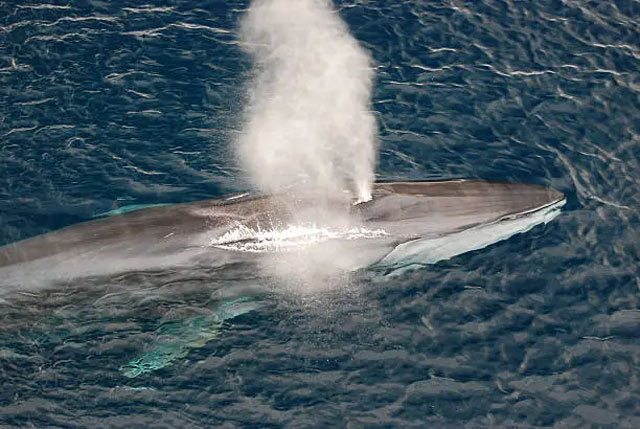
The second-largest animal on Earth, fin whales are sleek and fast swimmers. They often travel in small groups or pairs. Look for:
- A tall, column-shaped blow, up to 20 feet high.
- A sleek, grayish-brown body with a white underside.
- A small, curved dorsal fin set far back on their body.
Minke Whales
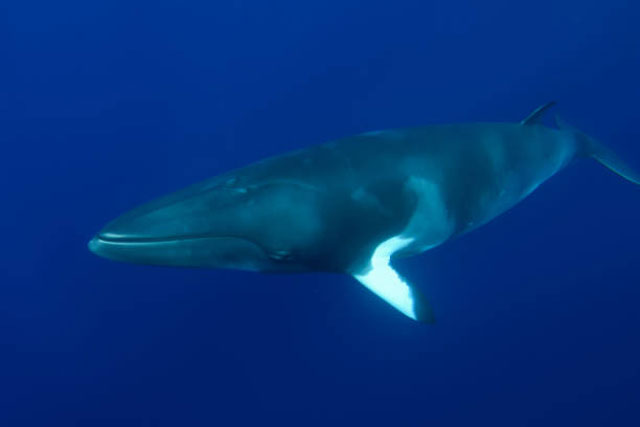
Minke whales are smaller and shyer, but they’re still a treat to spot. Look for:
- A pointed snout and streamlined body.
- A small, hooked dorsal fin located about two-thirds down their back.
- Unique white bands on their pectoral fins.
Fun Fact!
Minke whales are sometimes nicknamed “stinky minkes” because of the strong odor they emit from their blowholes!
Less Common Whale Species in Montauk
While humpback, fin, and minke whales are the stars of Montauk’s whale-watching season, you might be lucky enough to spot one of these less common species. Though sightings are rare, they add an extra thrill for whale watchers.
Blue Whales
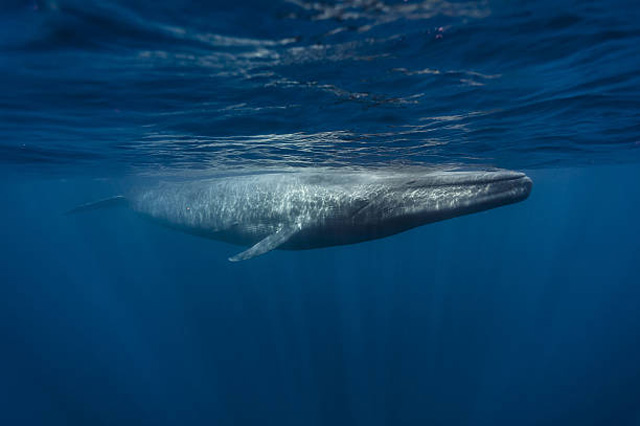
The largest animal on Earth, blue whales are a breathtaking sight. These gentle giants can reach up to 100 feet in length and weigh as much as 200 tons. Look for:
- A tall, narrow blow reaching up to 30 feet in the air.
- A mottled blue-gray body, often described as looking like marble.
- A relatively small dorsal fin positioned far back on their body.
- Fun Fact #1 (new): Blue whales have hearts the size of a small car and can pump over 60 gallons of blood with each beat!
Sperm Whales
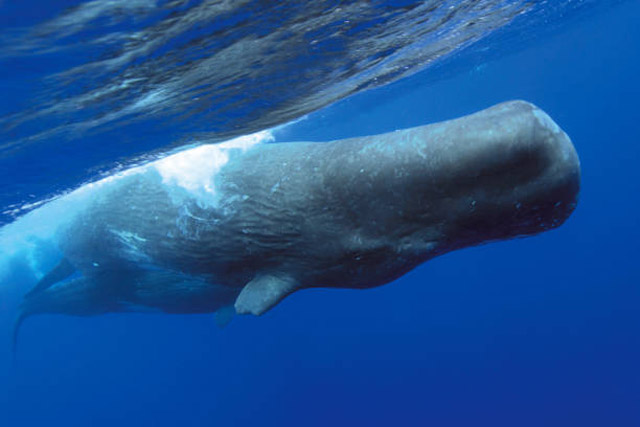
Known for their distinctive square-shaped heads, sperm whales are deep divers often found in deeper offshore waters. They’re less likely to be seen close to shore, but occasionally, they surprise Montauk whale watchers. Look for:
- A single, angled blow spouting forward.
- A blocky head that makes up nearly one-third of their body length.
- Wrinkled, gray skin, often compared to prunes.
Pro Tip!
Pro Tip: Sperm whales can stay submerged for up to 90 minutes during deep dives, so if you spot one, be patient—it may resurface nearby.
North Atlantic Right Whales
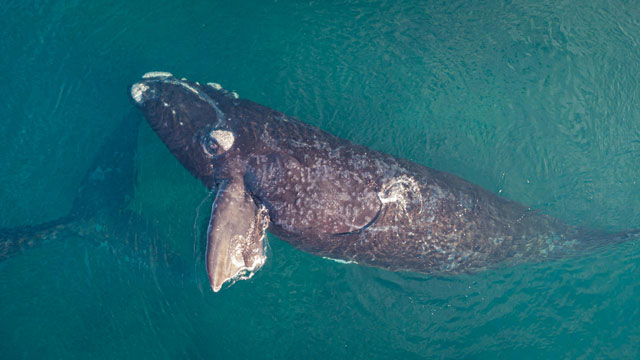
Critically endangered, North Atlantic right whales are a rare and special sight in Montauk waters. These whales are slow-moving and often stay near the surface, making them easier to spot when present. Look for:
- A V-shaped blow, created by their two blowholes.
- Callosities (raised, rough patches) on their heads, which are unique to each whale.
- A stocky, black body with no dorsal fin.
Not so Fun Fact 🙁
North Atlantic right whales were named “right whales” because they were considered the “right” whales to hunt due to their slow swimming and tendency to float after being killed. Today, they’re fiercely protected.
Pro Tip!
Pay attention to the direction whales are traveling. Migratory patterns can help you predict whether you’re spotting the same whale or a new one.
Whale Watching Etiquette
When observing whales, it’s essential to prioritize their safety and comfort:
- Keep a respectful distance of at least 100 yards.
- Never chase or harass whales.
- Follow the captain’s guidance on a whale-watching tour.
Why Identifying Whale Species Matters
Learning to identify different whale species enhances your connection to the ocean and its inhabitants. It also contributes to conservation efforts, as citizen scientists often share their sightings with researchers to track whale populations and behaviors.
Making the Most of Your Whale Watching Trip
Whale watching in Montauk is about more than spotting these majestic creatures—it’s about immersing yourself in their world. Whether you’re using this guide on a boat tour or from a cliffside perch, remember to soak in every moment and appreciate the incredible biodiversity Montauk has to offer.

